Marketing, Online Business, Productivity
Discover the Best Time to Send Marketing Emails for Higher ROI in 2024
- By Moshe
- No Comments
09 Sep
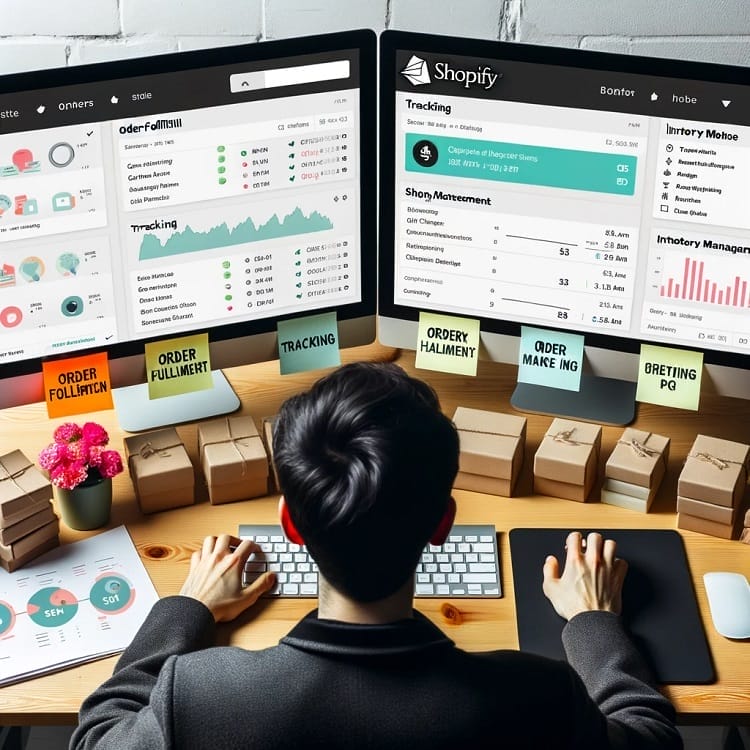
Discover the Best Time to Send Marketing Emails for Higher ROI in 2024
Hey, savvy marketer! You’re here because you get it: Email marketing isn’t just about what you say—it’s also about when you say it. We’re all in pursuit of that sweet spot, the golden hour where clicks transform into customers and customers turn into loyal advocates. Guess what? Timing isn’t just a concept; it’s your silent business partner.
No, we’re not talking superstition or folklore. This is about data-driven decision-making, backed by solid research. You’re not alone in your quest for higher ROI in 2024. In this comprehensive guide, we’ll unlock the secrets behind the perfect timing for your marketing emails.
So grab a coffee or tea, and let’s get down to the nitty-gritty. Why? Because knowing the best time to hit that “send” button can skyrocket your ROI—and we both know you’re here for results, not just reads.
The State of Email Marketing in 2024
In a digital landscape constantly shifting under the weight of social media and new tech, you might think email marketing is the dinosaur waiting for its asteroid. Think again. The power of email marketing in 2024 has not only survived but evolved, boasting innovative trends, robust technologies, and an ROI that still steals the spotlight.
Just picture this, for every dollar you invest in email marketing, you could see a whopping $36 return. Think that’s impressive? In 2020, this channel raked in $7.5 billion and it’s poised to nearly double, reaching close to $17.9 billion by 2027. Now that’s what we call a growth curve worth hopping on!
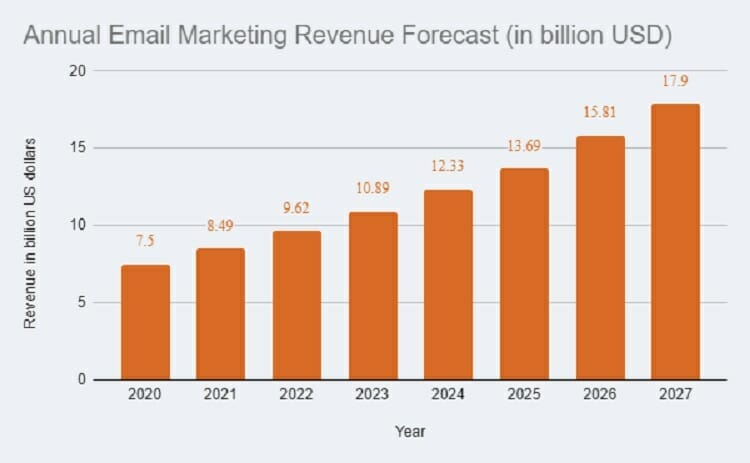
Current trends in email marketing
Step up your email marketing game by embracing interactivity. In this digital era, especially as we cruise through 2024, your audience craves emails that offer more than just static text and images. Incorporating interactive elements directly into your emails, such as clickable quizzes or embedded videos, not only boosts engagement but also provides value, making your messages impossible to ignore.
But interactivity isn’t the only key to success. The modern consumer wants more than a sales pitch; they’re hungry for a narrative. That’s where storytelling comes into play. Connect with your audience by sharing the story of your brand, its mission, and why it matters. This authentic communication builds a bridge between your business and its customers, raising engagement levels and fostering loyalty.
And let’s not overlook the elephant in the room: data privacy. Apple’s new privacy settings have sent ripples across the marketing landscape, making it harder than ever to track email campaign performance. But instead of lamenting, it’s time to adapt. Your strategy needs to pivot towards metrics that are still accessible and actionable, or risk becoming obsolete. Data privacy isn’t just a buzzword; it’s a cornerstone of the modern marketing landscape. Stay ahead of the curve, and you’ll stay in the inbox.
New technologies or methods that have evolved
Don’t let sci-fi movies fool you; artificial intelligence is more than just a plot twist. AI is now your marketing wingman, capable of sorting through data like a pro, tailoring emails with personalization algorithms, and helping you make calculated decisions, all at the speed of light. It’s not a trend; it’s the new standard.
Think email is yesterday’s news? The numbers say otherwise. ROI for email marketing remains robust, proving it is not just a tool but a cornerstone in your marketing arsenal. In fact, 41% of businesses have gone on record to say that email marketing is vital for their operation, marking a significant leap of nearly 30% since before the pandemic.
And while social media may seem like the trendsetter, email marketing isn’t just keeping up; it’s setting its own trends. If you’re considering taking a break from your email campaigns to chase the social media dragon, hold off. Email marketing is not just alive; it’s a flourishing field, teeming with innovation and commanding engagement. Hesitate no more—hit that “Send” button.
Why Timing is Critical?
In the fast-paced world of digital marketing, timing is not just a detail—it’s a make-or-break factor. From the instant your email lands in a customer’s inbox to the ticking clock that diminishes its relevance, each moment counts. In this section, we’ll explore why timing is critical in email marketing, focusing on open rates, time decay, and the psychological impact of when an email is received.
Open Rate and CTR Statistics
Sending your emails at the optimal moment can significantly elevate both the open rate and the click-through rate (CTR). Your emails have the best chance of being engaged when they arrive at a time when the recipient is likely to be checking their inbox.
Time Decay
The relevance of an email diminishes with time. The longer it languishes in someone’s inbox, the less likely it is to be opened and acted upon, underscoring the importance of well-timed delivery.
Psychological Aspects
The timing of an email’s arrival can shape its reception. An email landing in the morning might be viewed as useful information and given more attention, while one sent late at night could be perceived as less important or even spammy.
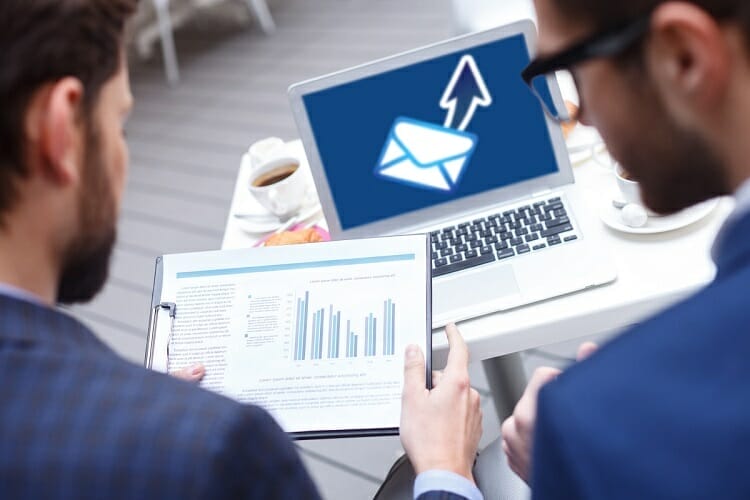
Factors That Influence Optimal Timing
In email marketing, timing is not an afterthought but a pivotal factor that can significantly influence your campaign’s success. Numerous elements contribute to the ‘sweet spot’ of sending emails, which range from audience demographics to industry norms. This section uncovers key determinants that can help you fine-tune when to hit the send button on your next email marketing campaign.
Audience Demographics
- Age: Different age brackets show varied email-checking behaviors. For example, seniors may prefer to open emails early in the morning, whereas younger demographics might be more active during late hours. A significant chunk of every generation interacts with brands through email. Baby Boomers lead the charge at 74%, followed closely by Generation X at 72%. Millennials aren’t far behind, with 64% using email to touch base with companies, and even 60% of Gen Z are getting in on the action. This diverse range suggests that email marketing can be a versatile tool for reaching various age groups.
- Occupation: Professions also dictate email-checking habits. Corporate individuals are more likely to check during working hours, whereas freelancers or self-employed persons may have more flexible schedules.
- Time Zones: A global audience necessitates considering time zones. An email sent at 9 a.m. in New York is received at 2 p.m. in London and at 11 p.m. in Sydney.
Industry Specifics
Certain industries find specific days and times more effective than others. For example, retail might benefit from weekend sends, while B2B sectors could have more success during weekdays.
Days of the Week
When it comes to opening emails, Monday steals the spotlight with a 22% open rate. But if clicks are what you’re after, aim for Tuesday—a day boasting a 2.4% click-through rate. Interestingly, Wednesday and Tuesday are neck-and-neck with click-to-open rates at 10.7% and 10.8% respectively.
On the flip side, consider avoiding weekends for your email campaigns. Sunday’s open rate slumps to 20.3%, while both Saturday and Sunday struggle with a meager 2.1% click-through rate. If you’re worried about click-to-open performance, maybe steer clear of Friday through Sunday, where rates plummet to 10.1%. Choose your send days wisely to make every email count.
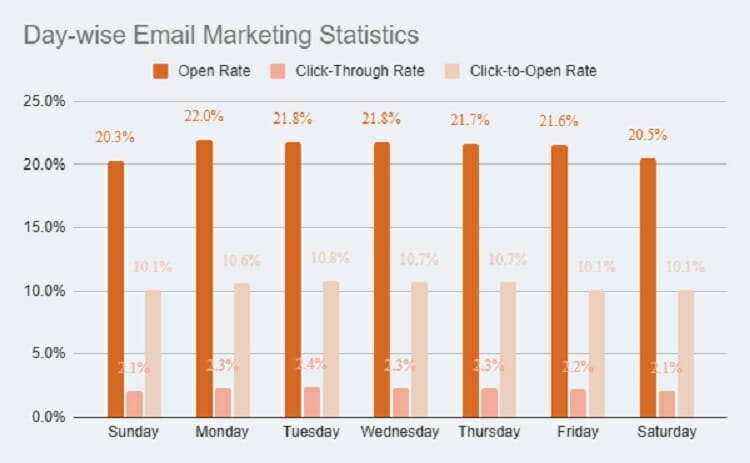
Optimal Timing
Studies suggest that the best window for sending emails in 2023 lies between 6 a.m. and 2 p.m. In fact, data from 20 million emails pinpoint 11 a.m. EST as an optimal time for sending emails.
To maximize your email marketing impact, a tailored approach that considers these variables can prove extremely beneficial. It’s crucial not only to know your audience but also to understand how broader factors intersect to create the ideal moment to send an email.
Proven Strategies to Identify Your Best Time
Deciphering the best time to dispatch your marketing emails can significantly amplify your campaign’s effectiveness. There’s no universal golden hour, but there are reliable strategies and tools that can guide you toward your unique sweet spot. In this section, we unwrap these tried-and-true tactics to help you zero in on your optimal email send time.
A/B Testing
A/B testing, sometimes referred to as split testing, entails dispatching two versions of the same email at varied timings to select portions of your mailing list. Imagine dispatching Email A at 9 a.m. and its twin, Email B, at 2 p.m. Subsequently, you’d keenly observe essential metrics, like open rates or click-through percentages. Whichever time showcases superior engagement will be your cue for broadcasting to your wider audience.
Analytics & Metrics
- Open Rate: This signifies the fraction of your audience who actually clicked to unveil your email.
- Click-to-Open Rate: From those who opened the email, this metric spotlights the percentage who took action by clicking a link within.
- Bounce Rate: Keep tabs on undelivered emails. Monitoring these helps you fine-tune and cleanse your mailing list.
- Engagement Duration: The duration for which a recipient engages with your email can shed light on its captivating power.
Machine Learning and AI
- Tailored Timing: Machine learning dives deep into past data, emerging with predictions on when a recipient is most poised to open an email.
- Hands-free Scheduling: AI doesn’t just predict; it acts. Advanced tools can take over the email dispatching task, aligning with the most opportune moments.
- On-the-fly Tweaks: The world of AI never sleeps. Cutting-edge models constantly recalibrate send times, factoring in real-time data like a user’s present online activity.
Quick Tips to Get Started
Ready to elevate your email marketing game? This section arms you with essential tools and actionable steps to immediately improve your campaign’s timing and performance.
Tools and Platforms That Can Help
- Mailchimp: This all-in-one platform offers robust analytics and A/B testing features, helping you pinpoint your optimal email timing.
- HubSpot: Beyond simple email marketing, HubSpot integrates with your CRM to personalize and time your emails based on user behavior.
- Google Analytics: This tool can track how users engage with your emails, providing another layer of data to refine your timing strategy.
- SendinBlue: Known for its AI-driven send-time optimization, SendinBlue takes the guesswork out of when to hit ‘send.’
Simple Steps for Immediate Improvement
- Start with Research: Before you do anything else, check out your competitors. When are they sending their emails? It’s a good starting point for your own timing strategy.
- Segment Your List: Don’t send emails to your entire list at once. Break it down into segments like new subscribers, engaged users, and inactive users. Each segment may have its own ‘best time’ for emails.
- Conduct A/B Testing: Choose two different times to send the same email to a small segment of your list. Monitor open rates and click-throughs to identify which time works best.
- Monitor Metrics: Keep an eye on key metrics like open rate, click-to-open rate, and bounce rate. Use this data to continuously refine your strategy.
- Automate: Once you have enough data, use automation tools to schedule emails at the optimal times for different segments.
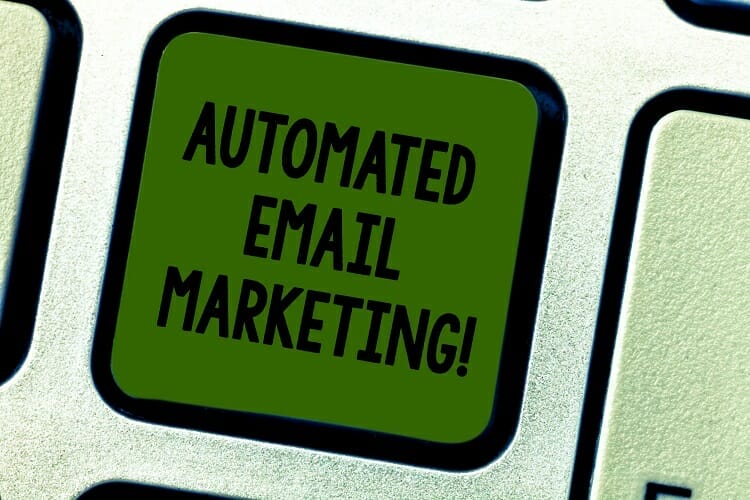
Pitfalls to Avoid
Navigating the waters of email marketing? You can’t afford to ignore the icebergs ahead. Let’s tackle some common pitfalls.
Common Misconceptions
- More Emails, More Engagement: Many think that bombarding your audience with emails increases engagement. In reality, this tactic wears out your welcome and can decrease your open rates.
- Graphics Over Content: It’s easy to think an email full of visuals will capture attention. But, cluttering your emails with too many graphics can actually distract from your core message.
- One-Size-Fits-All: A generic email might save you time, but it won’t engage your audience. Tailoring your message to your audience’s needs is crucial for effective communication.
Over-Optimization and Its Drawbacks
- Keyword Stuffing: Sprinkling too many keywords throughout your email seems like an SEO dream, but it’s a reader’s nightmare. It ruins the flow and can be flagged as spam.
- Obsession with Timing: While sending emails at an optimized time can boost engagement, don’t let it paralyze you. Consistency and quality content matter more than hitting a “perfect” send time.
- Ignoring Mobile Users: In a quest for a perfectly designed email, it’s easy to forget mobile users. Make sure your emails are optimized for mobile to reach a broader audience.
So, as you build your email marketing strategy, sidestep these pitfalls and your campaign will be smooth sailing.
Preparing for the Future
In the rapidly evolving landscape of email marketing, standing still is not an option. Looking ahead, AI and machine learning are set to become your new best friends. These technologies will further refine the science of timing, automating the process to pinpoint not just the best day or hour, but perhaps even the perfect minute to hit “send.” And let’s not overlook how machine learning algorithms can adapt in real-time, factoring in new user behavior to continually optimize engagement.
But while technology offers powerful tools, it’s adaptability that will be the cornerstone of your email marketing success. Market trends shift, consumer behavior evolves, and algorithms get updated. Being agile and willing to pivot your strategies ensures you stay ahead of the curve. It’s this blend of cutting-edge tech and a flexible approach that will turn your good email marketing campaigns into great ones, both now and in the future.

Conclusion
So, what’s the takeaway? Timing is more than just a tick-tock on the clock; it’s a pivotal factor in your email marketing success. From leveraging A/B testing to diving deep into metrics, and from embracing AI to maintaining adaptability, your approach to finding that golden send time should be as dynamic as the digital world we live in.
But here’s the thing: data and advice can only take you so far. It’s time to roll up those sleeves and get experimenting. Test your emails, analyze the results, tweak, and test again. Your ideal send time won’t find itself. So go ahead, seize this newfound knowledge and put it into action. Your email marketing ROI will thank you later.
Ready to elevate your e-commerce game? There’s no better place to sharpen your skills than right here at the Importify blog. Your one-stop-shop for everything e-commerce. Dive in now and don’t miss a beat in the fast-paced world of online selling. Subscribe today!
Helping thousands of people to automate their dropshipping business. Skilled in Marketing Management, Advertising, and eCommerce.
Recent Posts
 Successful Dropshipping Techniques To Succeed In Dropshippin…April 15, 2024
Successful Dropshipping Techniques To Succeed In Dropshippin…April 15, 2024 5 Best Practices For Effective Inventory ManagementApril 8, 2024
5 Best Practices For Effective Inventory ManagementApril 8, 2024 How Many Products Should I Start With Dropshipping?April 7, 2024
How Many Products Should I Start With Dropshipping?April 7, 2024 Know the Best Product Research Tools for DropshippingApril 4, 2024
Know the Best Product Research Tools for DropshippingApril 4, 2024 Wix Dropshipping: The Ultimate Guide to Starting a Thriving …April 3, 2024
Wix Dropshipping: The Ultimate Guide to Starting a Thriving …April 3, 2024





Moshe